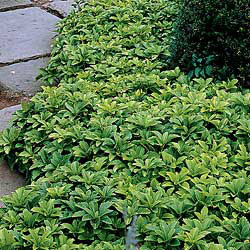
Things YOU Can Do To Protect The Natural World Around You
ENCOURAGE GROWTH OF NATIVE MASSACHUSETTS PLANTS IN YOUR BACKYARD
PLANT NATIVE PLANTS IN YOUR YARD
Help For People Who Want To Go Native
Have you ever gone to a nursery looking for native plants but found out that "native" can mean grown anywhere in the United States? Or have you purchased a native plant, planted it in your yard but discovered too late that you planted it in a wet area when it needed a dry spot?
We're here to help you:
-
Select plants indigenous to the southeastern Massachusetts pine barrens region
-
Find out where to obtain indigenous plants (coming soon)
-
Plant them in the correct location (coming soon)
-
Help your plants thrive (coming soon)
-
Find answers. Contact us with all of your native questions at friends@friendsmssf.com
Why Go Native?
Why? Because encouraging indigenous plants will help preserve and sustain the pine barrens of southeastern Massachusetts, which is the world's second largest remaining tract of pine barrens. The globally rare pine barrens harbor many unique plants and animals. If the pine barrens disappear, they'll be gone for good. It is good for diversity but also good for you to plant native. Below are some of the benefits of using plants native to the pine barrens:
- Save water Many native drought-tolerant plants do not need watering, once they are established. If you pay for water, planting native will save you money. More water remains in the ground, in the Plymouth-Carver Aquifer, which sustains ponds and lakes in the region and supplies drinking water for all of us.
- Less fertilizer Native plants do not need fertilizer thus saving you still more money and reducing the amount of harmful chemicals that degrade the environment and may even end up in the drinking water.
- Support native birds and bees Native birds and the insects they eat need native plants to survive. The Myles Standish State Forest is the habitat for 41 state listed rare and endangered plant and animal species. However, the habitat doesn't end at the forest boundary. It's up to everyone who lives in the pine barrens region to do what they can to maintain this unique habitat.
- Less work means more time The good news is, the more you restore your yard and allow it to return to a natural pine barrens habitat, the more you are going to find time for things other than yard maintenance! Plus you'll save additional money, because you won't have to keep replacing your plants. They will be well adapted to the challenging environment of southeastern Massachusetts
- Retain that special character Southeastern Massachusetts has a special character. Why spoil a rare and endangered ecosystem by tearing the elegant native vegetation and replacing it with mass-produced, standardized grass, shrubs, or flowers that are either horticultural hybrids that don't occur anywhere in nature or else are coming from foreign lands? Do we really want our special place to loose its unique appeal? Planting native species preserves the character, that special sense of place.¯ Let's let those who come to Plymouth, Wareham, Carver, or Kingston experience our own, very special kind of natural harmony. Start now to preserve the special character of the region for our children and grandchildren. Go native!
* Native plants in danger You may have heard that native plants are not as susceptible to diseases and insect infestations as non-native plants and that you will save money by not spending it on insecticides and chemical treatments. Unfortunately, this is a very doubtful statement. Many native trees, such as sugar maple and flowering dogwood, have been literally wiped out due to diseases and are no longer planted because they have proved to be susceptible to invasive non-native pathogens.
Nationwide, non-native plants are replacing native plants, coming in together with those non-native pathogens to which they are adapted. Examples: Canadian hemlock and hemlock woolly adelgid, American chestnut and chestnut blight (vs. Chinese chestnut tolerant to the blight), etc.
You will still have to monitor your yard for invasive plants and pests. With greater control of invasive species, the pine barrens of southeastern Massachusetts might have a chance of survival. Please do your part. Please contact the Friends of Myles Standish State Forest for help at plants@friendsmssf.com
SIGNATURE PLANT OF PINE BARRENS
Beech (Fagus grandifolia Ehrh.)
Let it grow!
ENCOURAGE GROWTH OF NATIVE MASSACHUSETTS PLANTS IN YOUR BACKYARD:
Signature Plants of the southeastern Massachusetts pine barrens. Pictures and information from Salicicola.com
wild raspberries and blackberries
hickories, white and pitch pines, junipers, sassafras
BEST CHOICES FOR PINE BARRENS
Mountain Laurel (Kalmia latifolia L.)
Plant it!
PLANT NATIVE PLANTS IN YOUR YARD
Your best choices are plants native to our state. You don't think they could be an asset to your home? Think again! Here are just a few examples:
Canada, wood, and Turk's cap lilies
PLANTS DESTROYING PINE BARRENS
Barberry (Berberis thunbergii DC.)
AND GET RID OF THESE OFFENSIVE ALIENS ASAP!
BAD FOR PINE BARRENS
Pachysandra (Pachysandra terminalis.)
Tear it out!
PLANT WISELY! MAKE EDUCATED CHOICES AT THE NURSERY
Beware! Some highly invasive plants are not yet banned from the nursery trade. They will escape from your lot and take over natural areas and reservations:
Vinca and Pachysandra
Please don't use Vinca and Pachysandra as groundcovers, especially when your property borders a natural area--or else you may create a disaster, like this, in the neighboring forest:
Don't just buy anything that looks pretty. Do your homework! Research your choices yourself. GO NATIVE!



